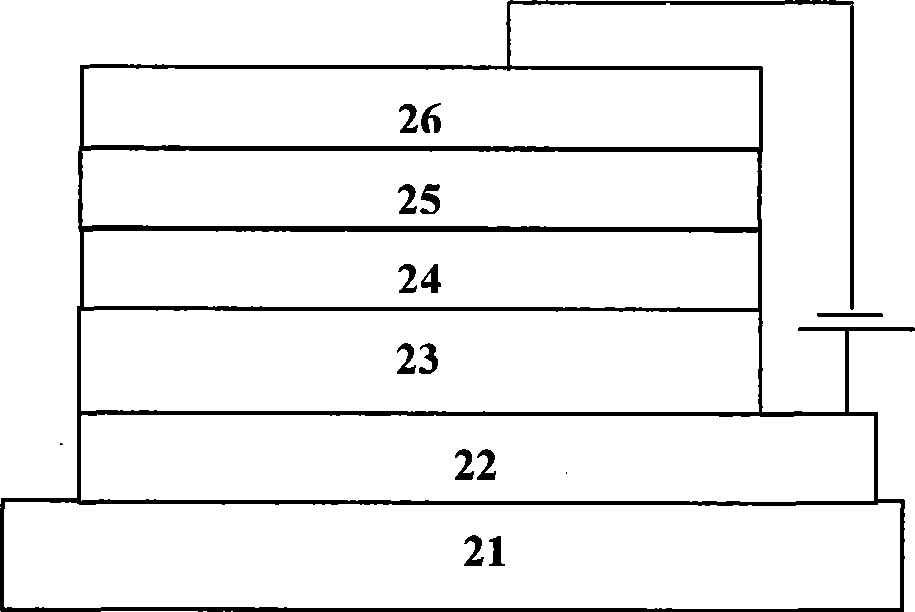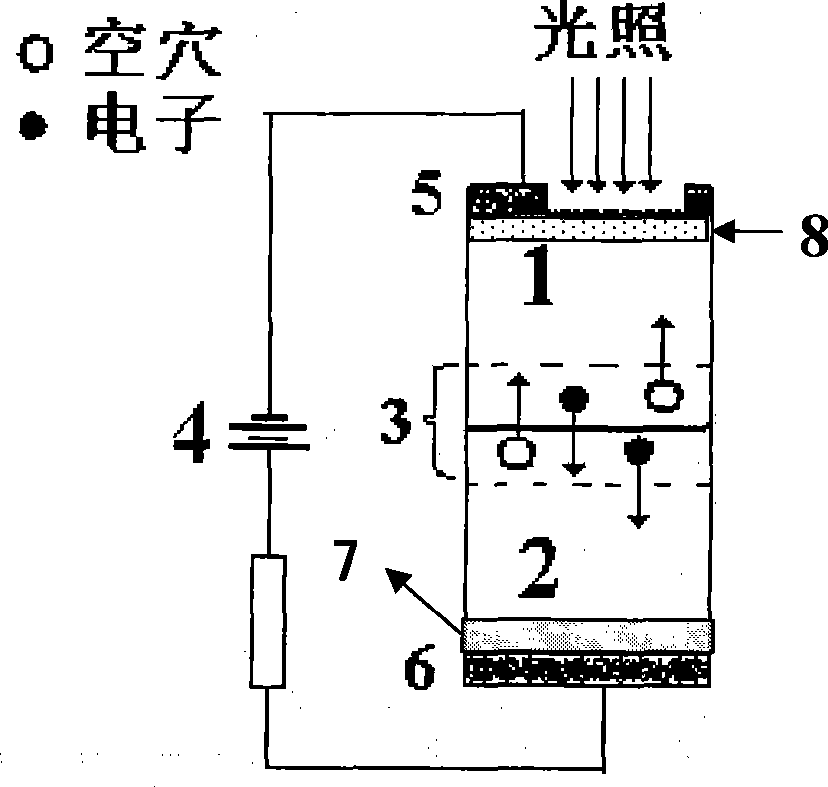Organic light coupling device
An optocoupler device, an organic technology, applied in the field of optoelectronics, can solve the problems of high cost, difficulty in integrating flexible substrates, etc., and achieve the effects of simple preparation process, cost reduction, and broad application prospects
- Summary
- Abstract
- Description
- Claims
- Application Information
AI Technical Summary
Problems solved by technology
Method used
Image
Examples
Embodiment 1
[0040] An organic optocoupler device combining an organic electroluminescent display (OLED) and an organic photodiode is prepared. The preparation process steps of the organic photocoupler device are as follows: firstly, an OLED device is prepared on a glass substrate, and then an organic photosensitive diode is prepared on another substrate.
[0041] The structure of the OLED device is ITO / NPB (40nm) / ADN: 7% DPAVBi (30nm) / BPhen (40nm) / Mg: Ag (10:1, 150nm) / Ag (50nm), ADN is 9,10-two ( 2-naphthyl)anthracene (9,10-bis(2′-naphthyl)anthracene), DPAVBi is 4,4’-bis[2-(4-(N,N’-di-p-tolyl)aminophenyl ) Vinyl]biphenyl (4,4'-bis[2-(4-(N,N'-dipmethylphenylamino)phenyl)vinyl]biphenyl), their molecular structures and current-voltage-brightness curves and luminescence of OLED images The spectrum is shown in Figure 4a middle.
[0042] The preparation process is to prepare a layer of transparent indium tin oxide (ITO) conductive film on the glass substrate, and use the photolithography me...
PUM
| Property | Measurement | Unit |
|---|---|---|
| Thickness | aaaaa | aaaaa |
Abstract
Description
Claims
Application Information
 Login to View More
Login to View More - R&D Engineer
- R&D Manager
- IP Professional
- Industry Leading Data Capabilities
- Powerful AI technology
- Patent DNA Extraction
Browse by: Latest US Patents, China's latest patents, Technical Efficacy Thesaurus, Application Domain, Technology Topic, Popular Technical Reports.
© 2024 PatSnap. All rights reserved.Legal|Privacy policy|Modern Slavery Act Transparency Statement|Sitemap|About US| Contact US: help@patsnap.com










